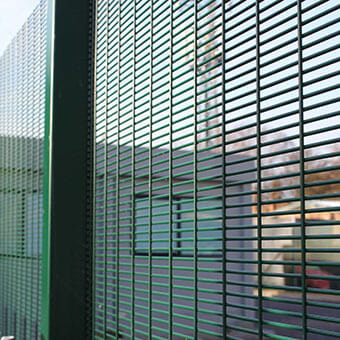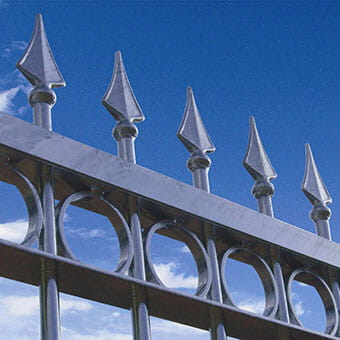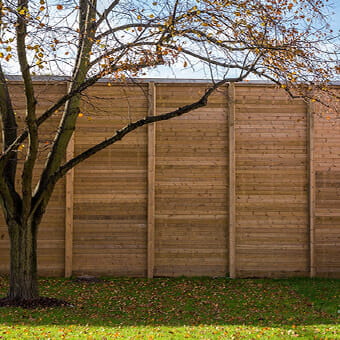Our other sites:
National parks are invaluable treasures, offering a sanctuary for wildlife and a haven for outdoor enthusiasts seeking exercise, education, culture and history, and simply to connect with the natural beauty of these environments. For decades, our commitment to preserving the integrity of important landscapes has led us to supply fencing solutions tailored to the unique needs of national parks and conservation areas. We have been supplying the parks since 1949, the landmark year as the government passed an Act of Parliament to establish national parks to preserve and enhance their natural beauty and provide recreational opportunities for the public. Our range of premium quality fencing has been applied for agricultural, equestrian, demarcation uses, incorporating both aesthetics and security. Our fencing solutions for national parks are aimed at enhancing visitor safety and safeguarding the natural and historical heritage of these revered spaces.
In the UK, the 15 national parks welcome over 100 million visits every year. The sheer volume of people travelling through these places facilitates the requirement for pedestrian and vehicular activity management and restriction in certain areas, in order to protect and preserve these sites for the future. National parks require fencing for several reasons including:
Wildlife protection
Fencing helps protect wildlife by defining boundaries and preventing conflicts between humans and animals. Fencing also prevents animals from straying into areas where they may be at risk from traffic, human disturbance, or other dangers. Later, we detail the types of fencing that we recommend in order to prevent any harm coming to wildlife in the process of installing protective measures – particularly hedgehogs.
Habitat restoration
Fencing can be used to protect fragile habitats within national parks, allowing them to recover from damage caused by human activity or invasive species. It helps to create safe zones where native plants and animals can thrive undisturbed.
Visitor safety
Fences are essential for ensuring the safety of park visitors, especially in areas with steep cliffs, dangerous wildlife, or other hazards. They help to guide visitors along designated trails and prevent accidents or injuries.
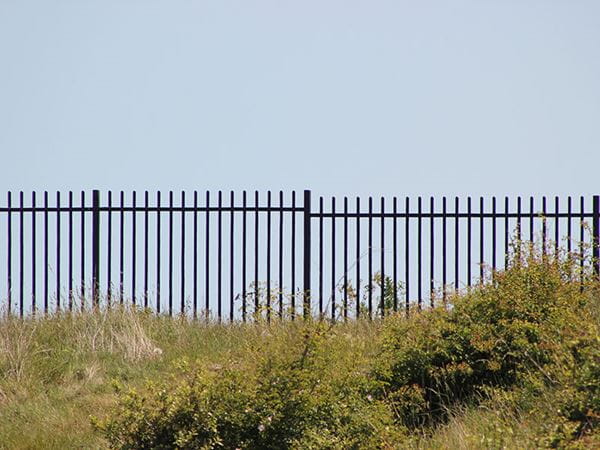
Barbican vertical bar railing installation at Bishopstone Glen, Kent
Resource management
Fencing can be used to manage the movement of livestock and prevent overgrazing in sensitive areas. This supports the long-term health of ecosystems and preserves biodiversity.
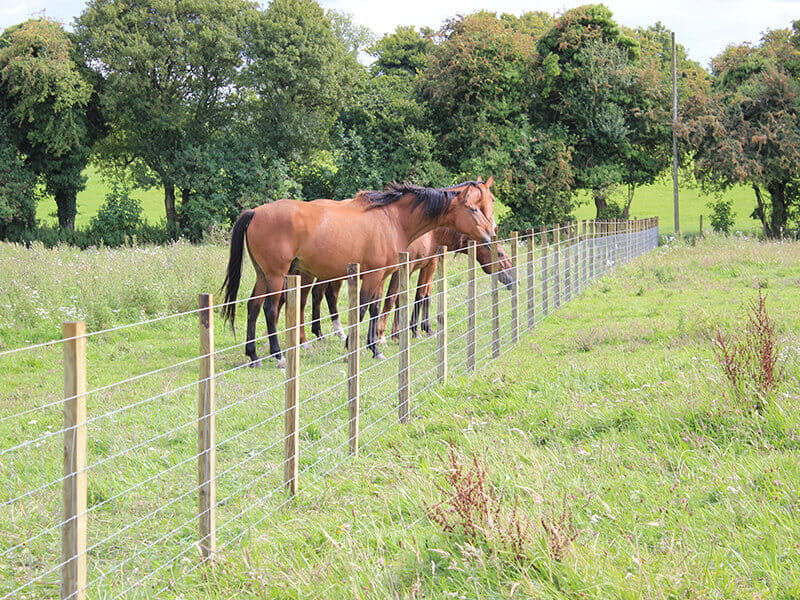
Boundary marking
Fences serve as visual markers to delineate the boundaries of national parks, helping to prevent encroachment from neighbouring properties and ensuring the integrity of protected areas.
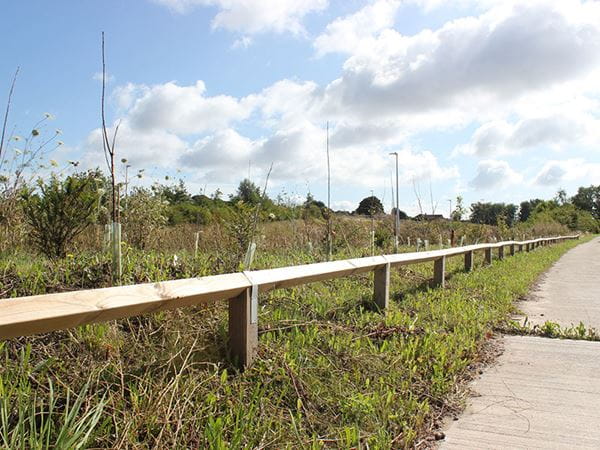
Noise reduction
In some cases, acoustic barriers may be required to reduce noise from major roads that run through or around national parks, minimising the impact of traffic noise on wildlife and visitors alike.
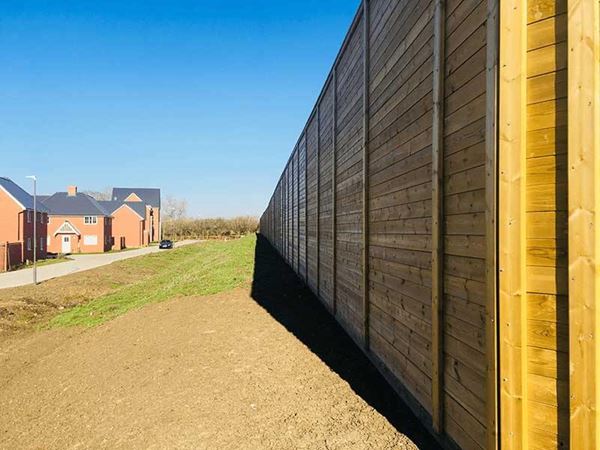
Jakoustic Reflective acoustic barrier at UK's most wildlife friendly housing development: Kingsbrook, Aylesbury
Types of fencing for national parks
It's imperative that any development within national parks minimises environmental impact. The fencing solutions we recommend for national parks prioritise sustainability and environmental stewardship through their inherent design and longevity. We recognise that many fencing installations often require concrete for stability, but we advocate for solutions that minimise the need for concrete within their structure, reducing disruption to the natural landscape. As a company, we do not sell concrete posts. Through refining and perfecting our material selection and treatment processes, we have found success in giving timber the long life it deserves and is capable of. Every timber or steel product we manufacture comes with a 25 year guarantee against rust, rot, and insect attack. With a focus on longevity, our fencing solutions not only endure the test of time but also contribute to the preservation of biodiversity within these protected areas. By minimising the use of concrete and considering the end-of-life impact of fencing materials, we aim to mitigate the frequency and environmental footprint of our installations, and promote sustainable practices.
Wildlife-friendly fencing
In addition to minimising environmental impact, our fencing solutions for national parks prioritise wildlife conservation. By incorporating features such as wildlife passages and gaps beneath vertical bar fences, we strive to facilitate the movement of wildlife while maintaining the integrity of fencing boundaries. Our commitment to wildlife-friendly fencing underscores our dedication to preserving the delicate balance of ecosystems within national parks and conservation areas.
Our vertical bar fencing was installed at a large coastal park in Kent. Its galvanised and polyester powder coated finish not only provides an attractive appearance and helps it blend into the green surroundings, but also protects it from the harsh coastal weather. The open structure of the fence allows nature to reclaim it, much like mesh fencing does, however the paled design provides more space and ensures that hedgehogs and other small mammals are not restricted and protects them from entrapment in the fence. Find out more about hedgehog friendly security fencing here.
Addressing noise pollution
National parks are not immune to the impacts of human activity, including noise pollution from nearby roads. To mitigate the effects of noise on wildlife and visitors alike, we offer noise barrier solutions designed to minimise sound transmission from major roads and other activity. Our timber noise barriers not only enhance the acoustic environment within national parks but also contribute to the overall tranquillity and serenity of these natural sanctuaries with their coinciding natural appearance. Our acoustic barriers were used in the UK’s most wildlife friendly housing estate; read more here.
Common fence types installed in national parks include:
Timber fencing such as post and rail fencing and knee rail fencing – to designate pathways and protect verges
Vertical bar railings – around dangerous areas/animals or protected landmarks
Welded mesh panels (close knit or covered apertures) – around power supplies and water sources
Access control measures – to allow and deny access and control parking
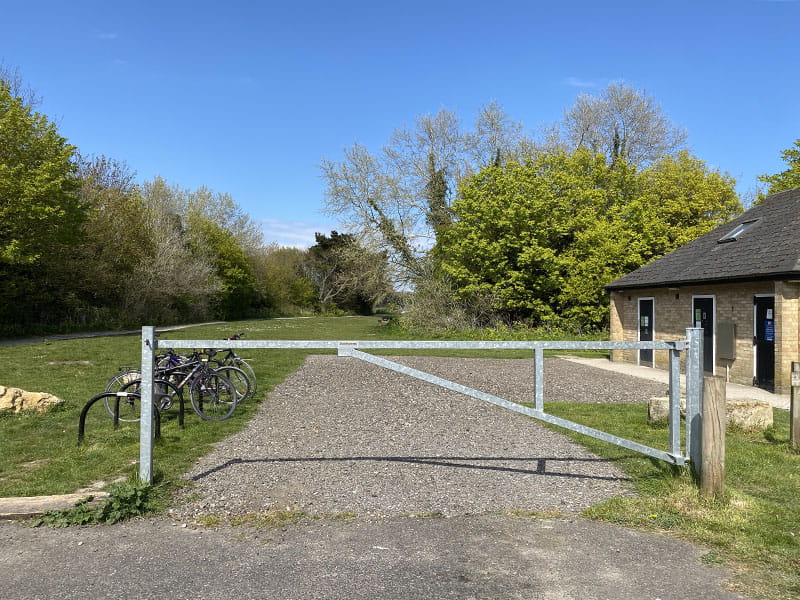
Warden swing barrier at Pegwell Nature Reserve, Kent
Related Content
Related products
Jacksons Security has a range of products relating to this article, all complete with our 25 year service life guarantee. If you cannot find the item you are looking for, please do not hesitate to call our friendly sales team.
Top
